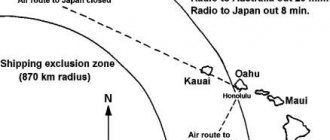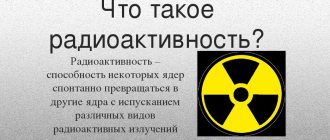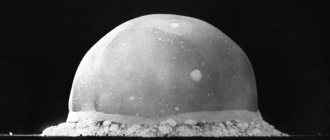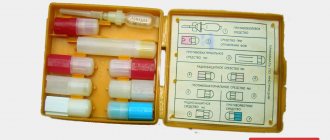Peculiarities
The destructive effect of ionizing radiation on living tissue is a well-known fact, and since its discovery, humanity has been working to protect the population and army in the event of the use of certain types of weapons, accidents in industries powered by atomic energy, and cosmic rays that pose a danger.
There is no simple clothing that could protect a person from radioactive radiation, but some success has already been achieved - people know how to defend themselves from the flow of ions in different ways. Developments include biological and physical protection, using distance, shielding, time and chemical compounds.
The materials it uses against harmful radiation depend on the source of the hazard:
- simple and affordable means, such as a respirator and rubber gloves, protect against alpha radiation;
- you can prevent the consequences of exposure to beta particles with the help of a protective suit used in the army - it includes a gas mask, special fabrics (glass and plexiglass, aluminum, light metal can reduce exposure);
- heavy metals are used against gamma radiation, some of them more effectively dissipate dangerous energy flows, which is why lead is more often used than iron and steel;
- Synthetic materials or thick water can save you from neutrons, so polymers, rather than lead and steel, are used for radiation protection.
A layer of any material used to create a radiation suit is called a half-attenuation layer if it is capable of halving the penetration of ions to living tissues. Any means of anti-radiation protection are aimed at creating an optimal protection factor (it is calculated by measuring the level of radiation existing before the creation of the counteracting layer, and comparing it with how intense the penetration is after a person finds himself in any shelter).
It is impossible at this level of human knowledge to create a universal radiation suit that would protect against any type of ions, hence the variety of options. But in addition to it, chemical protective agents can be used to prevent the development of damage caused to living cells.
Using a special radiation suit
An anti-radiation suit is a means of ensuring the individual safety of a person located in an area of increased radiation danger.
It is important to note that no special suit is able to completely protect against dangerous effects, especially if the source of contamination emits gamma waves with significant energy. However, the use of modern materials and production technologies makes it possible to reduce the intensity of exposure by tens or hundreds of times, and almost completely eliminate the penetration of alpha and beta particles
However, the use of modern materials and production technologies makes it possible to reduce the intensity of exposure by tens or hundreds of times, and eliminate the penetration of alpha and beta particles almost completely.
The main areas of application of personal radiation protection equipment are:
- nuclear energy enterprises;
- research centers;
- medical institutions working with X-ray equipment;
- spaceships and stations;
- ships with nuclear power plants;
- military infrastructure facilities where nuclear weapons are developed, produced and stored, as well as chemical protection parts;
- departments of the Ministry of Emergency Situations and other services that work or theoretically can work in areas of high background levels;
- liquidators of accident consequences at nuclear power plants.
The type, device and equipment can vary dramatically depending on the specific niche of their application.
Risk of radiation exposure
The process of spreading energy is called radiation. Infrared, ultraviolet, light, and ionizing radiation all fall under this category. From the standpoint of life protection and means of protection against radiation, the ionizing type is of keen interest. At high doses of radiation, the process of ionization of the substance promotes the formation of free radicals in cells that destroy the integrity of the cell membrane.
The radiation cannot be detected without the right equipment, making it a very dangerous enemy. Its penetration occurs through the respiratory and digestive systems and through the skin. It most actively affects cells that are in the process of dividing. This feature makes its impact especially harmful to a growing child’s body and requires careful protection from radiation.
In addition to the development of cancerous tumors, it causes the following diseases:
- infertility;
- mutations at the cellular level;
- leukemia;
- cataract;
- diarrhea;
- damage to various organs;
- blood diseases;
- radiation sickness.
It is necessary to distinguish between the concepts of radiation and radioactivity. The second is the property of substances to emit ionizing radiation, which requires the use of radiation protection equipment. The first is the ionizing radiation itself, wandering in open space and existing before being absorbed by another substance.
Nutritional supplements against radiation
Taking medications and products that reduce the toxic effects of radionuclides will help neutralize the effects of a dose of radioactive radiation. Natural protectors are:
- White bread;
- nuts;
- radish;
- wheat;
- kelp (sea kale);
- onion;
- garlic.
Among the most common remedies that help reduce the annual dose of radiation, pharmaceuticals offer Ginseng Root. It must be taken 40 drops twice a day before meals. Eleutherococcus, leuzea, lungwort, and honeywort can also help reduce radiation exposure.
There is a little-known drug called ASD, developed more than 50 years ago in Soviet laboratories. It showed excellent results, but currently it can only be purchased in specialized veterinary pharmacies. Western colleagues also discovered a drug that blocks a protein that tends to trigger the mechanism of cell destruction during irradiation - CBLB502. According to researchers, only one injection is enough to eliminate the effects of radiation.
For preventive purposes, it is recommended to take iodine-containing products. This element, when entering the body, has the remarkable property of counteracting the radioactive variety of unstable iodine.
The main range of anti-radiation drugs and medications are:
Myth: There are rumors that ethyl alcohol increases radiation resistance. In fact, alcohol only worsens the condition of the body, since the lack of oxygen it causes further weakens the immune system.
For residents located in an area of increased radiation danger, the best protection against radiation will be the use of a dosimetric device. It will make it possible to timely monitor the level of radiation and avoid interaction with radioactive objects.
Kinds
The most common and well-known protective kit is used by the army.
By turning it inside out, you can camouflage yourself in snowy areas, since it is white inside. The OZK set includes stockings, gloves and a raincoat, which are securely fastened with various devices - straps, pegs, ribbons and fasteners.
The OZK is available in several heights and sizes, available in winter and summer, and can be used in conjunction with a respirator or gas mask. It cannot be worn for a long time, but in the first hours it can prevent the breakdown of body tissue, and then shelter, chemical protection or distance are used. This useful product is now sold in hunting and fishing stores; it can be purchased and used both for utilitarian, everyday purposes, and when there is a threat of radioactive damage.
A special radiation protective suit (RPS) is designed to protect people in areas exposed to combined radiation.
- It provides excellent protection against beta particles and can, to some extent, prevent the effects of gamma radiation. Depending on the specifics of radiation damage, any type of radiation injury can be used, but modern advanced protective kits can prevent the destructive consequences of alpha and beta fluxes and neutrons.
- Gamma particles are not completely neutralized, even if the suit is lead (the most common option), tungsten, steel or heavy metal plates. It limits freedom of movement, but is most effective in hazardous areas where gamma radiation is a predominant factor.
- This suit includes a special insulating spacesuit, under which a jumpsuit and underwear are worn, and it is equipped with an air supply system. The entire set weighs more than 20 kg.
Theoretically, protective suits include all means that can temporarily prevent the action of destructive particles on the skin, mucous membranes, organs of vision and breathing.
The progress of science and the use of atomic energy for peaceful and military purposes have led to the creation of more advanced designs, but the gas mask is still in use, although it has been significantly modified.
Defensive actions
- External beta and partially gamma radiation.
- From increased thermal exposure.
- From hot air currents.
- Prevents the entry of radioactive gases and aerosols through the respiratory tract and digestive tract.
- Prevents radioactive dust from coming into contact with human skin and mucous membranes.
- Prevents radiation burns.
- Reduces the impact of penetrating radiation on the body.
This suit helps save life during overexposure or prolonged stay in a controlled radiation zone.
The performance characteristics of the RZK suit allow it to be used by various emergency rescue units, and not just in the fire department.
To the question, what is the duration of stay in zones of combined gamma irradiation, the answer is very simple: it depends on the equivalent dose rate and is calculated on the dose limits prescribed by NRB-99 for group A.
The manufacturers of the protective equipment kit took into account all the main points, so in the under-suit space there is a special compartment with the possibility of dosimetric monitoring using an individual gamma radiation dosimeter.
Personnel dressed in RZK
Radiation protection for food, water and air
First, let’s dispel the myths that radiation in its pure form can contaminate air, water, and food. If you had a tightly closed can of water in your shelter, then the water will not become radioactive even under the influence of strong radiation. This will happen if radioactive particles get into the water. This also applies to air and water. Therefore, the primary task is to protect food and water from secondary radiation. Store water in sealed containers. Package products in cellophane. Because even thin polyethylene can protect products from the penetration of radioactive particles. Products in packaging and natural casings can be washed, thereby removing radioactive dust. Secondary radiation is dangerous primarily because radioactive particles can enter the body with food, water, and inhaled air. Once inside, the particles, depending on the type of chemical element, are absorbed into various organs, continuing to irradiate the body from the inside. For example, radioactive iodine-131 accumulates in the thyroid gland. When reaching the surface, you should take into account the distance to the radioactive fallout deposited on the surface of the earth - near the ground itself, the background will be several times higher than at a height of 0.7 - 1 m (at approximately this height our internal organs are located). Therefore, it is better to carry children on your shoulders, because due to their short stature, walking on the ground on their own, they will receive a larger dose than adults.
If you receive information about an increase in radiation levels, you can take potassium iodide for 7 days, one tablet (0.125 g), and for children under 2 years old - 1/4 of the tablet (0.04 g). If potassium iodide is not available, you can use an iodide solution at the rate of 3-5 drops of a 5% iodine solution per glass of water, for children under 2 years old - one or two drops. When using, be sure to read the instructions for the drug!!! According to unverified information, this method of protection is not so harmless to the body!!!
PS The article will be supplemented and edited
Related materials:
Radiation protection equipment
Radiation exposure is weakened by heavy substances, which act as a kind of protective shield. The following substances delay the effects of radiation:
- steel, 13 cm;
- water, 100 ml;
- brick, 40 cm;
- lead, 8 cm;
- loose soil, 90 cm;
- dense soil, 60 cm.
It is unsafe for people working in rooms with high background radiation to be present without the appropriate “equipment.” As methods of protection against radiation, there are specially designed screens that block ionizing radiation and a radiation suit.
For example, alpha radiation tends to affect only the skin when exposed externally. To ensure protection from radiation, you should use a respirator, gloves made of rubber, a polyethylene raincoat and cotton clothing.
Protecting yourself from beta radiation is a little more difficult. If the permissible radiation dose is exceeded, a glass or aluminum sheet shield and a gas mask will serve well. There is no need to study encyclopedias to understand how to build a shelter: just take shelter in the basement of a brick or concrete building.
The most difficult way to protect against radiation is when exposed to gamma radiation. The materials used to make the necessary uniforms - lead, tungsten, cast iron and steel - are quite expensive and have a high mass. How to make a shelter if it is not possible to determine the type of particles? Brick walls with interior decoration made of metal sheets and polyethylene will help protect you from the effects of any radiation dose.
Device, design and equipment
Radiation protection using special protective suits refers to the so-called “shielding method”. It consists in creating a barrier that is insurmountable for a specific type of radiation. Consequently, it is the type of radiation, the impact of which is most likely, that determines the material of manufacture. Apply:
- If alpha particles predominate - rubber, polymers, paper respirators. Such suits are lightweight, cheap and comfortable, but can withstand only the most primitive radiation.
- In the case of a predominance of beta particles - aluminum, plexiglass, specialized gas masks. The suit remains quite light, but it is more difficult to manage. Tightness becomes an important factor.
- In the case of gamma radiation predominance - lead, steel, tungsten and other heavy metals. Uniforms of this kind turn out to be heavy and cumbersome, it is extremely inconvenient to move and work in. However, this is a necessary payment - otherwise there is no escape from gamma waves. Lead plates were used in the suits of liquidators of the Chernobyl accident.
- In case of exposure to neutron particles - polymer and water-containing materials, graphite.
Most modern anti-radiation suits completely exclude exposure to neutrons, alpha and beta particles, and, to a greater or lesser extent, exposure to gamma waves.
Structurally, the product is a sealed spacesuit, consisting of a main part, boots and gloves, a hood, and a helmet with a porthole (fixed or removable) combined into a common module. An important element is the compartment for housing the air supply system.
The standard individual kit (using the example of a modification of the RZK) includes:
- complete isolation suit;
- undersuit protective overalls;
- a set of underwear, linings and insoles;
- optionally - an air supply system consisting of a cylinder, cylinder fittings, and lines.
The weight of such a kit is 22-25 kg.
If you want to know why filtering civilian gas masks are needed, then there is a separate article for you.
How to protect yourself from electric shock, and what technical means of protection exist for this, you will learn here.
Read separately about the rules for using a respirator for respiratory protection.











